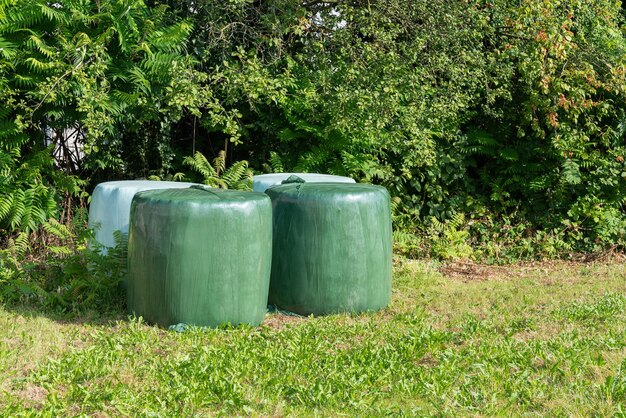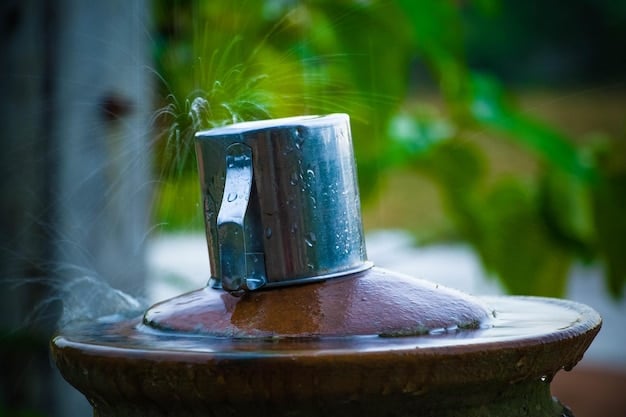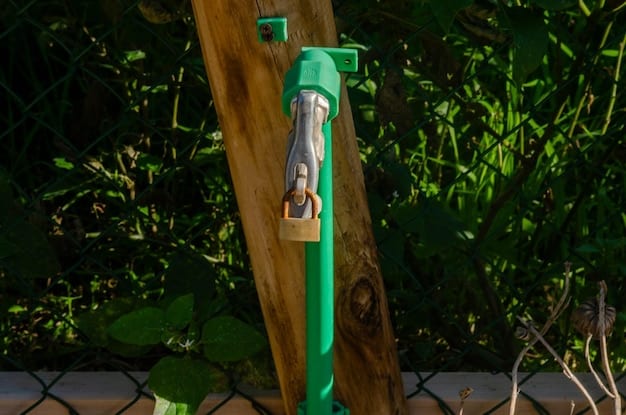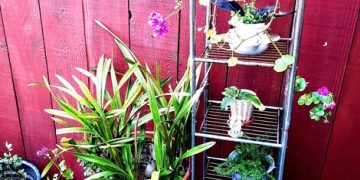DIY Rain Barrel System: Save Water & Money (Up to 30% Off!)

DIY rain barrel systems offer an eco-friendly and cost-effective way to collect and reuse rainwater for your garden, potentially saving up to 30% on your water bill while conserving a valuable resource.
Imagine reducing your water bill by up to 30% while also helping the environment. With a DIY rain barrel system, this is entirely achievable. Collecting and reusing rainwater for your garden is a simple yet effective way to conserve water and save money.
Why Build a DIY Rain Barrel System?
Building a DIY rain barrel system is an excellent way to embrace sustainable living and reduce your environmental footprint. Rainwater is a valuable resource, and collecting it for your garden offers numerous benefits, both for you and the planet.
From saving money on your water bill to providing your plants with naturally soft water, a rain barrel system is a rewarding DIY project that offers long-term benefits.
Benefits of Collecting Rainwater
Collecting rainwater brings several advantages that make it a worthwhile endeavor for any homeowner. Let’s explore some key benefits:
- Cost Savings: Reduce your reliance on municipal water, leading to lower water bills.
- Environmental Conservation: Conserve water, a precious natural resource, by utilizing rainwater for your gardening needs.
- Plant Health: Rainwater is naturally soft and free from chemicals like chlorine, which can be harmful to plants.
- Erosion Control: Rain barrels help reduce stormwater runoff, preventing soil erosion and flooding.

By implementing a rain barrel system, you’re not only saving money but also contributing to a healthier environment and a more sustainable lifestyle.
Planning Your DIY Rain Barrel System: Essential Steps
Before diving into the construction, careful planning is crucial for a successful DIY rain barrel system. Assessing your needs and selecting the right location will ensure your system is efficient and effective.
Proper planning includes determining the size of your barrel, choosing the ideal spot, and understanding local regulations.
Assessing Your Water Needs
Understanding how much water you typically use for your garden will help you determine the size and number of rain barrels you need.
- Estimate Usage: Calculate your average water consumption for gardening during peak seasons.
- Consider Garden Size: Larger gardens require more water, so plan accordingly.
- Factor in Rainfall: Research average rainfall in your area to estimate potential water collection.
Accurately assessing your needs will ensure you have an adequate supply of rainwater to meet your gardening requirements.
Essential Materials and Tools for Your Rain Barrel
Gathering the right materials and tools is a critical step in ensuring your DIY rain barrel project goes smoothly. Having everything on hand before you begin will save you time and frustration.
From the barrel itself to the necessary fittings and tools, here’s a comprehensive list to help you get started.
Materials You’ll Need
Select materials that are durable, weather-resistant, and appropriate for water storage.
- Food-Grade Barrel: Choose a clean, food-grade plastic barrel, typically 55-75 gallons.
- Downspout Diverter: A diverter directs rainwater from your downspout into the barrel.
- Spigot: Install a spigot near the bottom of the barrel for easy access to the collected water.
- Hose Connector: Attach a hose connector to the spigot to connect your garden hose.
Ensuring you have all the necessary materials will set you up for a successful and efficient rain barrel construction.
Step-by-Step Guide to Building Your Rain Barrel
Building your own rain barrel is a straightforward process that can be completed in a few hours with the right tools and materials. Follow this step-by-step guide to construct a functional and efficient rain barrel system.
Each step is detailed to provide clear instructions, making the process easy to follow for DIY enthusiasts of all skill levels.
Step 1: Prepare the Barrel
Begin by cleaning the inside of the barrel thoroughly to remove any residue or contaminants. Use soap and water, and rinse well.
Step 2: Install the Spigot
Drill a hole near the bottom of the barrel and install the spigot. Ensure a tight seal to prevent leaks.
Step 3: Attach the Downspout Diverter
Cut the downspout and install the diverter according to the manufacturer’s instructions. Position the diverter to direct water into the barrel.

By following these steps carefully, you can construct a rain barrel that is both functional and long-lasting.
Installing and Maintaining Your Rain Barrel System
Once your rain barrel is built, proper installation and regular maintenance are essential to ensure its longevity and efficiency. Choosing the right location and performing routine inspections will keep your system in top condition.
Let’s explore the key aspects of installation and maintenance to maximize the benefits of your rain barrel system.
Choosing the Right Location
Select a location that is level, easily accessible, and close to a downspout. Ensure the barrel is placed on a stable surface to prevent tipping.
Regular Maintenance Tips
To keep your rain barrel system functioning optimally, follow these maintenance tips:
- Clean Regularly: Empty and clean the barrel periodically to remove debris and prevent algae growth.
- Inspect for Leaks: Check the spigot and connections for any leaks and repair as needed.
- Winterize: In cold climates, disconnect and drain the barrel to prevent freezing and potential damage.
Proper installation and maintenance will extend the life of your rain barrel system and ensure it continues to provide a reliable source of water for your garden.
Troubleshooting Common Rain Barrel Issues
Like any system, rain barrels can encounter issues from time to time. Understanding common problems and their solutions will help you keep your system running smoothly.
From clogs to leaks, here are some troubleshooting tips to address common rain barrel issues.
Common Problems and Solutions
Be prepared to address potential problems with your rain barrel system:
- Clogs: Regularly clean the downspout diverter and screen to prevent clogs.
- Leaks: Tighten connections and replace worn-out seals to address leaks.
- Algae Growth: Add a small amount of bleach or copper sulfate to the water to inhibit algae growth.
By being proactive and addressing issues promptly, you can ensure your rain barrel system remains efficient and trouble-free.
| Key Point | Brief Description |
|---|---|
| 💧 Water Conservation | Collecting rainwater reduces reliance on municipal water sources. |
| 💰 Cost Savings | Using rainwater for gardening can lower your water bill significantly. |
| 🌱 Plant Health | Rainwater is naturally soft and free from harmful chemicals. |
| 🛠️ DIY Project | Building a rain barrel is a simple and rewarding DIY project. |
Frequently Asked Questions
▼
Savings vary based on rainfall and usage, but many homeowners see a 10-30% reduction in their water bill by using collected rainwater for gardening and other outdoor tasks.
▼
Yes, rainwater is generally safe for all plants. It’s naturally soft and doesn’t contain the chlorine and other chemicals found in municipal water supplies, which can sometimes harm plants.
▼
Ideally, you should clean your rain barrel every few months to prevent algae growth and remove any accumulated debris. Regular cleaning ensures the water remains fresh and clear for use.
▼
The size of your rain barrel depends on your garden size and local rainfall. A 50-75 gallon barrel is a good starting point for most home gardens, but you can add more as needed.
▼
No, rainwater collected in a rain barrel is not safe for drinking unless it’s properly filtered and treated. It’s best to use the collected water for gardening and other non-potable uses.
Conclusion
Building a DIY rain barrel system is a rewarding project that offers numerous benefits, from saving money to conserving water and promoting plant health. By following these steps and tips, you can create an efficient and sustainable system that enhances your gardening experience and contributes to a greener planet. Embrace the principles of sustainability and enjoy the many advantages of harvesting rainwater for your garden.





